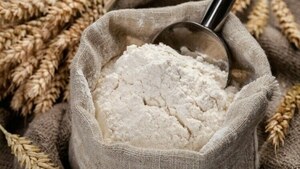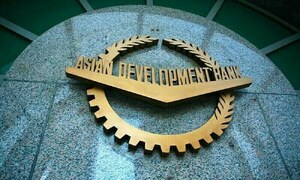Bundles of grain encircle China's national seal, but the world's most populous nation is likely to be short of rice and wheat this year and perhaps for some time to come. The country had a bumper harvest of 496 million tonnes in 2004 but will use it in part to replenish state inventories, which analysts believe were drawn down by a decade of declining grain harvests.
For grains traders from Dalian to Chicago as well as for China's 700 million farmers, the big wild card is China's grain stock pile. Reserves are a state secret, leaving the market guessing if sudden buying will push up prices or if a release of stocks will swamp the market.
"China is the swing factor. What Russia was 20 years ago, China is now," a Singapore-based grains trader said. The Soviet Union, with its centralised planning, used to rock world grain markets with erratic purchases.
Reforms have allowed farmers to decide which crops to plant based on market prices. But their calculations - and those of soyaoil crushers, feed producers and international trading houses - are clouded by the unpredictability of the reserves.
"The central government knows how much reserves they have. But they don't know the levels in provincial or commercial stocks, or in farmers' hands," said a grain trader in Beijing.
At the country's annual legislative meeting in Beijing last week, President Wen Jiabao announced an end to agricultural taxes two years ahead of schedule and extended grains subsidies and other aid for farmers. He pledged to boost grain production and keep prices stable.
Near-perfect weather and high market prices contributed more than grains subsidies to the bumper harvest in 2004, the US Department of Agriculture concluded - raising doubts as to whether China can eke out another increase in 2005.
Output could inch up to 470 million tonnes this year, a Chinese Cereals and Oils Association official estimated in January. Demand could reach 493 million tonnes. As a rule of thumb, reserves are supposed to equal six months of output in key producing regions, and three months of demand in consuming areas.
Responsibility for maintaining stocks is divided among the central and local governments. That creates a fragmented reporting system, vulnerable to local agendas.
In 2003 global wheat prices spiked after China suddenly realised its reserves had fallen to dangerously low levels, and started importing.
China imported a net $4.64 billion in agricultural products in 2004, underscoring its increasing importance in international commodities trade.
Governments in four north-eastern provinces are waiving taxes for exporters, to clear excess corn stocks. The China National Grains and Oils Information Centre estimates 2005 corn exports at 5 million tonnes.
Chinese exporters offer corn at about $130 a tonne on a free-on-board basis, or $14 a tonne less than domestic prices, traders said.
About 3 million tonnes have been sold so far this year, up from 2.3 million in all of 2004.
China could be forced to rely on rice stocks if the rice harvest falls short of demand, as expected, officials have said. The rice deficit could reach 10 million tonnes, or about half of the total volume of rice traded internationally.
BR100
15,085
Increased By
112.5 (0.75%)
BR30
44,012
Increased By
987.7 (2.3%)
KSE100
148,618
Increased By
1274.3 (0.86%)
KSE30
45,248
Increased By
370.7 (0.83%)





















Comments
Comments are closed.